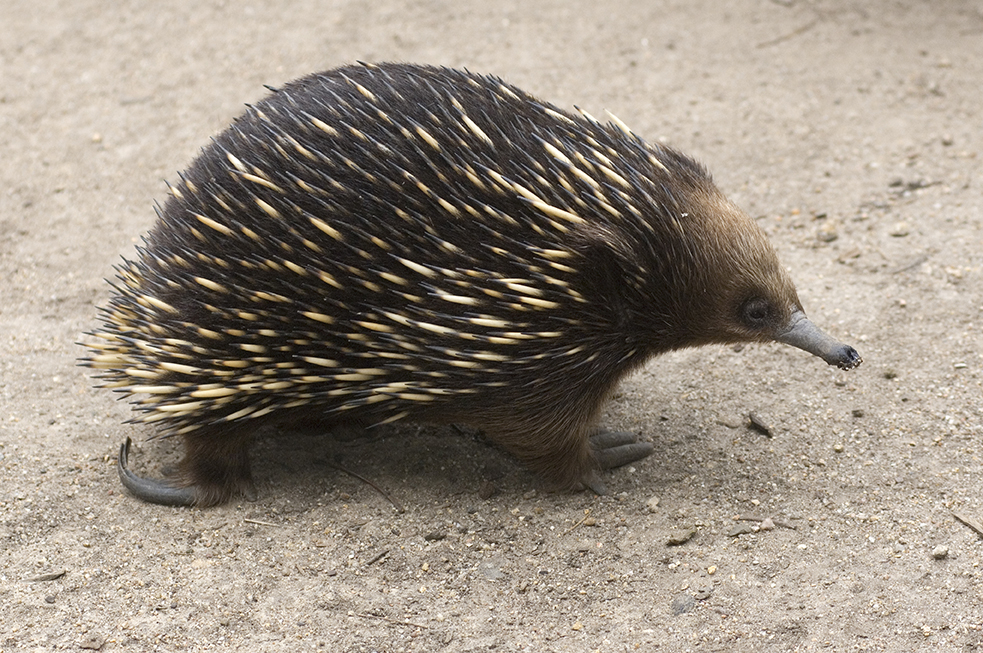
A mammal is a kind of animal. It has warm blood. It has hair. It gives birth to live babies. It feeds milk to its babies.
Only two mammals lay eggs: the Echidna [eh-KID-nuh] and the Platypus [PLAH-tuh-puss]. Both of these animals are native to Australia.
The echidna looks like a spiny anteater. It has a long, narrow snout. It has a long, sticky tongue that it uses to lick up ants. The echidna also has sharp spines covering its back that protect it from predators. It has short legs with large claws that it uses to dig up ants. It can dig very fast.
The echidna is a mammal that lays eggs. It has a pouch kind of like a kangaroo. The mom lays one soft, rubbery egg and then puts it in her pouch. When the egg hatches after 10 days, the baby is the size of a jellybean. A baby echidna is called a puggle. The mom feeds milk to her baby. The milk comes from a special place inside her pouch and baby laps it up with its tongue.
The puggle stays inside the pouch until it starts to grow spines. Then the mom takes it out and hides it in a burrow until it is large enough to take care of itself.
The platypus lives near water and is a good swimmer. It has a nose like a duck and a tail like a beaver. The platypus is a mammal that lays eggs. The mom makes a burrow and then lays one or two soft, rubbery eggs inside. She keeps them warm for 10 days until they hatch. The mom feeds milk to the babies from a special place on her body and they lap it up. She stays with them for three to four months. When they finally leave the burrow, the babies are big and strong enough to swim on their own.



 About BeeLine
About BeeLine